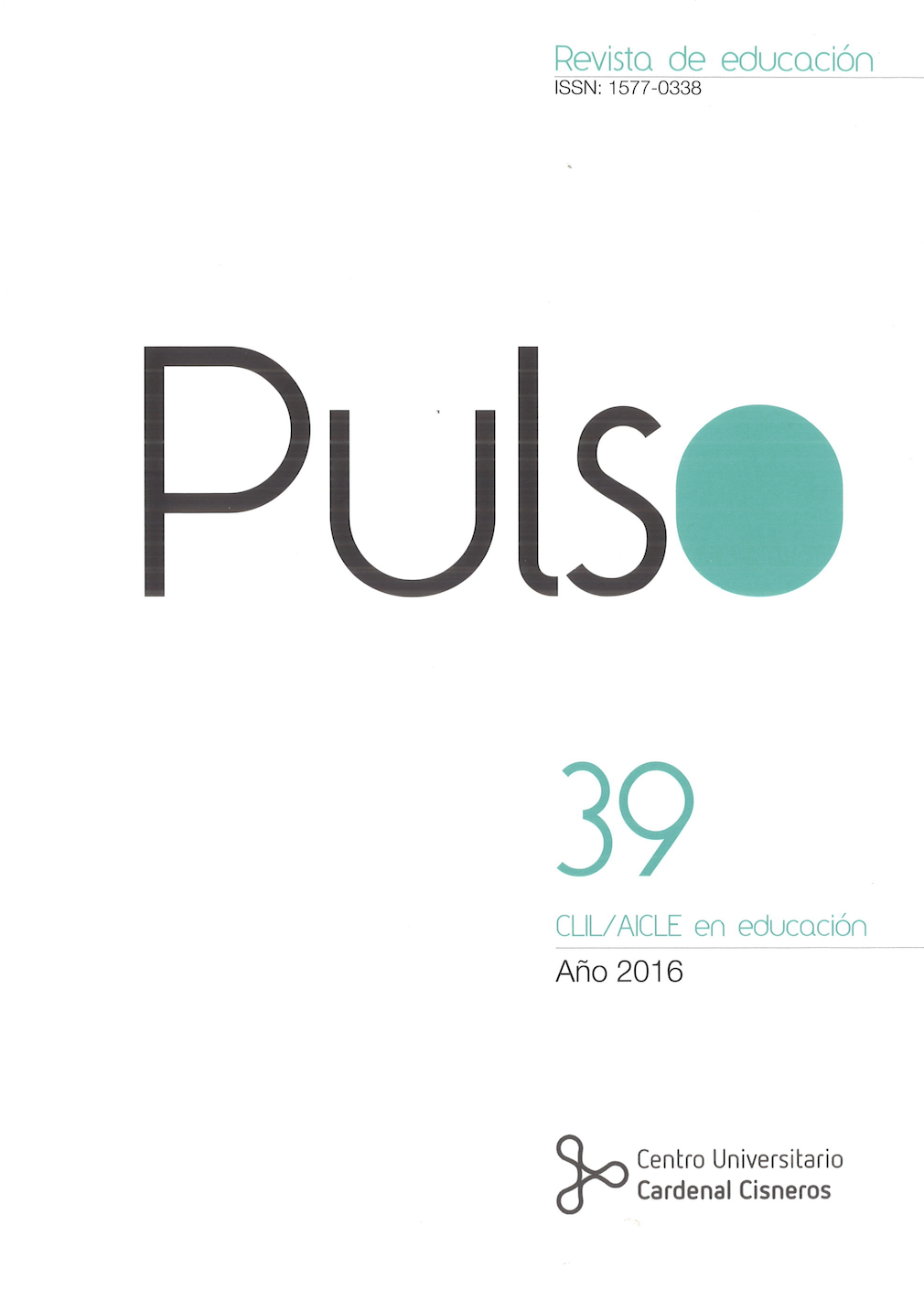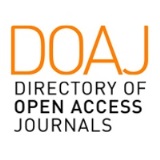Evaluating CLIL Programmes: Instrument Design and Validation
DOI:
https://doi.org/10.58265/pulso.5078Palabras clave:
AICLE, Cuestionarios, Validez, Fiabilidad, Perspectivas de los ParticipantesResumen
Este artículo presenta los tres cuestionarios que se han diseñado y validado en el seno de un Proyecto de I+D para determinar cómo están funcionando los programas AICLE en una amplia gama de contextos (Educación Primaria y Secundaria; contextos urbanos y rurales; centros públicos y privados; con profesorado, alumnado y padres y madres). Se trata de los primeros instrumentos cualitativos cuyo diseño se ha basado en los hallazgos de las más recientes investigaciones y que han sido sometidos a un riguroso proceso de doble pilotaje para su validación (sistema de jueces y pilotaje con una muestra representativa de casi 300 sujetos). Tras caracterizar las preguntas incluidas en los cuestionarios, junto con su formato y principales categorías, el artículo describe los pasos acometidos para su diseño y el proceso de pilotaje seguido para su validación. Los cuestionarios en sí (para profesorado, alumnado y padres y madres) se presentan en un formato directamente aplicable en cualquier aula AICLE para determinar el funcionamiento de los programas bilingües.
Descargas
Citas
Alonso, E., Grisaleña, J., and Campo, A. (2008). Plurilingual education in secondary schools: Analysis of results. International CLIL Research Journal, 1/1, 36-49.
Blanca Pérez, A. (2009). La administración educativa en la organización de la enseñanza plurilingüe. In A. Bueno González, J. M. Nieto García, & D. Cobo López (Eds.), Atención a la diversidad en la enseñanza plurilingüe. I, II y III Jornadas Regionales de Formación del Profesorado (CD-ROM). Jaén: Delegación Provincial de Educación de Jaén y Universidad de Jaén.
Brown, J. D. (2001). Using surveys in language programs. Cambridge: Cambridge University Press.
Cabezas Cabello, J. M. (2010). A SWOT analysis of the Andalusian Plurilingualism Promotion Plan (APPP). In M. L. Pérez Cañado (Ed.), Proceedings of the 23rd GRETA Convention (pp. 83-91). Jaén: Joxman.
Cenoz, J., Genesee, F., & Gorter, D. (2013). Critical analysis of CLIL: Taking stock and looking forward. Applied Linguistics, 2013, 1-21.
Coyle, D. (2006). Content and Language Integrated Learning. Motivating learners and teachers. . (December 3rd, 2015).
Coyle, D. (2010). Foreword. In D. Lasagabaster & Y. Ruiz de Zarobe (Eds.), CLIL in Spain: Implementation, results and teacher training (pp. vii-viii). Newcastle upon Tyne: Cambridge Scholars Publishing.
Coyle, D., Hood, P., & Marsh, D. (2010). CLIL. Content and Language Integrated Learning. Cambridge: Cambridge University Press.
Czura, A., Papaja, K., & Urbaniak, M. (2009). Bilingual education and the emergence of CLIL in Poland. In D. Marsh, P. Mehisto, D. Wolff, R. Aliaga, T. Asikainen, M. J. FrigolsMartín, S. Hughes, & G. Langé (Eds.), CLIL practice: Perspectives from the field (pp. 172-178). Finland: University of Jyväskylä,.
Denzin, N. K. (1994). The art and politics of interpretation. In N. K. Denzin & Y. S. Lincoln (Eds.), Handbook of qualitative research (pp. 200-515). Thousand Oaks, CA: Sage.
Díaz Cobo, A. (2009). Assessment instruments for CLIL written production tasks. In Marsh, P. Mehisto, D. Wolff, R. Aliaga, T. Asikainen, M. J. Frigols-Martín, S. Hughes & G. Langé (Eds.), CLIL Practice: Perspectives from the Field (pp. 139-148). Finland: University of Jyväskylä.
Dueñas, M. (2004). The whats, whys, hows and whos of content-based instruction in second/foreign language education. IJES, 4/1, 73-96.
Fernández Cézar, R., Aguirre Pérez, C., & Harris, C. (2009). Implementation of CLIL in Castilla-La Mancha (Spain) and teacher training. In D. Marsh, P. Mehisto, D. Wolff, R. Aliaga, T. Asikainen, M. J. Frigols-Martín, S. Hughes & G. Langé (Eds.), CLIL Practice: Perspectives from the Field (pp. 21-27). Finland: University of Jyväskylä.
Fernández Fernández, R., Pena Díaz, C., García Gómez, A., & Halbach, A. (2005). La implantación de proyectos educativos bilingües en la Comunidad de Madrid: las expectativas del profesorado antes de iniciar el proyecto. Porta Linguarum, 3, 161-173.
Fernández, R. & Halbach, A. (2011). Analysing the situation of teachers in the Madrid bilingual project after four years of implementation. In Y. Ruiz de Zarobe, J. M. Sierra, & F. Gallardo del Puerto (Eds.), Content and Foreign Language Integrated Learning. Contributions to multilingualism in European contexts (pp. 241-270). Frankfurt-am-Main: Peter Lang.
García López, M. & Bruton, A. (2013). Potential drawbacks and actual benefits of CLIL initiatives in public secondary schools. In C. Abello-Contesse, P. M. Chandler, M. D. López-Jiménez, & R. Chacón-Beltrán (Eds.), Bilingual and multilingual education in the 21st century. Building on experience (pp. 256-272). Bristol: Multilingual Matters.
García Mayo, M. P. (2009). El uso de tareas y la atención a la forma del lenguaje en el aula de AICLE. In V. Pavón Vázquez & J. Ávila López (Eds.), Aplicaciones didácticas para la enseñanza integrada de lengua y contenidos (pp. 55-74). Córdoba: Junta de Andalucía, Universidad de Córdoba, CETA.
Halbach, A. (2010). From the classroom to university and back: Teacher training for CLIL in Spain at the Universidad de Alcalá. In D. Lasagabaster & Y. Ruiz de Zarobe (Eds.), CLIL in Spain: Implementation, results and teacher training (pp. 243-256). Newcastle upon Tyne: Cambridge Scholars Publishing.
Hughes, S. (2010). The effectiveness of bilingual education: A case study. Paper presented at the 25th GRETA Convention: Celebrating 25 Years of Teacher Inspiration. Granada: University of Granada.
Infante, D., Benvenuto, G., & Lastrucci, E. (2009). The effects of CLIL from the perspective of experienced teachers. In D. Marsh, P. Mehisto, D. Wolff, R. Aliaga, T. Asikainen, M. J. Frigols-Martín, S. Hughes, and G. Langé (Eds.), CLIL practice: Perspectives from the field (pp. 156-163). Finland: University of Jyväskylä.
Kelly, K. (2007). Content and Language Integrated Learning: The Basque Country. In Humanising Language Teaching, 9/3, . (December 3rd, 2015).
Lasagabaster, D. (2009). The implementation of CLIL and attitudes towards trilingualism. ITL, International Journal of Applied Linguistics, 159, 23-45.
Lasagabaster, D. & Ruiz de Zarobe, Y. (2010). Ways forward in CLIL: Provision issues and future planning. In D. Lasagabaster & Y. Ruiz de Zarobe (Eds.), CLIL in Spain: Implementation, results and teacher training (pp. 278-295). Newcastle upon Tyne: Cambridge Scholars Publishing.
Lasagabaster, D. & Sierra, J. M. (2009). Language attitudes in CLIL and traditional EFL classes. International CLIL Research Journal, 1/2, 4-17.
Lorenzo, F. (2007). The sociolinguistics of CLIL: Language planning and language change in 21st century Europe. RESLA, Vol. Extra 1, 27-38.
Lorenzo, F. (2010). CLIL in Andalusia. In D. Lasagabaster & Y. Ruiz de Zarobe (Eds.), CLIL in Spain: Implementation, results and teacher training (pp. 2-11). Newcastle upon Tyne: Cambridge Scholars Publishing.
Lorenzo, F., Casal, S., Moore, P., & Afonso, Y. M. (2009). Bilingüismo y educación. Situación de la red de centros bilingües en Andalucía. Sevilla: Fundación Centro de Estudios Andaluces.
Lyster, R. (2007). Learning and teaching languages through content: A counterbalanced approach. Amsterdam: John Benjamins Publishing Company.
Madrid Fernández, D. (2006). Bilingual and plurilingual education in the European and Andalusian context. International Journal of Learning, 12/4, 177-185.
Marsh, D. (ed.). (2002). CLIL/EMILE. The European dimension. Actions, trends, and foresight potential. Jyväskylä: University of Jyväskylä.
Marsh D. and Langé, G. (Eds.). (2000). Using languages to learn and learning to use languages. Finland: University of Jyväskylä.
Marsh, D. (2013). The CLIL trajectory: Educational Innovation for the 21st century iGeneration. Códoba: Servicio de Publicaciones de la Universidad de Córdoba.
Martín del Pozo, M. A. (2011). Teacher training for CLIL in Higher Education: A needs analysis from a language awareness perspective. Paper presented at the II Congreso Internacional de Enseñanza Bilingüe en Centros Educativos. Madrid: Universidad Rey Juan Carlos.
Navés, T. (2009). Effective content and language integrated (CLIL) programmes. In Y. Ruiz de Zarobe & R. M. Jiménez Catalán (Eds.), Content and Language Integrated Learning. Evidence from research in Europe (pp. 22-40). Bristol: Multilingual Matters.
Patton, M. Q. (1987). How to use qualitative methods in evaluation. Newbury Park, CA: Sage.
Pena Díaz, C. & Porto Requejo, M. D. (2008). Teacher beliefs in a CLIL education Project. Porta Linguarum, 10, 151-161.
Pérez Cañado, M. L. (2014). Teacher training needs for bilingual education: In-service teacher perceptions. International Journal of Bilingual Education and Bilingualism, DOI: 10.1080/13670050.2014.980778.
Pérez Cañado, M. L. (2016). Are teachers ready for CLIL? Evidence from a European study. European Journal of Teacher Education. DOI: 10.1080/02619768.2016.1138104.
Roldán Tapia, A. (2007). Converting to CLIL. English Teaching professional, 52, 8-10.
Rubio Mostacero, M. D. (2009). Language teacher training for non-language teachers: Meeting the needs of Andalusian teachers for school plurilingualism projects. Design of a targeted training course. Jaén: Universidad de Jaén.
Ruiz de Zarobe, Y. & Lasagabaster, D. (2010). Introduction. The emergence of CLIL in Spain: An educational challenge. In D. Lasagabaster & Y. Ruiz de Zarobe (Eds.), CLIL in Spain: Implementation, results and teacher training (pp. ix-xvii). Newcastle upon Tyne: Cambridge Scholars Publishing.
Ruiz Gómez, D. A. (2015). A Practical approach to CLIL in L2 content-based courses: Methodological guidelines for the Andalusian bilingual classroom. In D. Marsh, M. L. Pérez Cañado, & J. Ráez Padilla (Eds.), CLIL in action: Voices from the classroom (pp. 14-30). Newcastle upon Tyne: Cambridge Scholars Publishing.
Ruiz Gómez, D. A. & Nieto García, J. M. (2009). Las secciones bilingües en Secundaria y Bachillerato. Marco organizativo. Dificultades y propuestas. In A. Bueno González, J. M. Nieto García, & D. Cobo López (Eds.), Atención a la diversidad en la enseñanza plurilingüe. I, II y III Jornadas Regionales de Formación del Profesorado (CD-ROM). Jaén: Delegación Provincial de Educación de Jaén y Universidad de Jaén.
Tobin, N. A. & Abello-Contesse, C. (2013). The use of native assistants as language and cultural resources in Andalusia’s bilingual schools. In C. Abello-Contesse, P.M. Chandler, M. D. López-Jiménez, & R. Chacón-Beltrán (Eds.), Bilingual and multilingual education in the 21st century. Building on experience (pp. 231-255). Bristol: Multilingual Matters.
Tudor, I. (2013). From content to competency: Challenge facing higher education language teaching in Europe. In M.L. Pérez Cañado (Ed.), Competency-based Language Teaching in Higher Education (pp. 21-32). Amsterdam: Springer.
Vázquez, G. (2007). Models of CLIL: An evaluation of its status drawing on the German experience. A critical report on the limits of reality and perspectives. RESLA, Vol. Extra 1, 95-111.
Wolff, D. (2005). Approaching CLIL. In D. Marsh (Coord.), The CLIL quality matrix. Central workshop report, . (December 3rd, 2015).
Descargas
Publicado
Cómo citar
Número
Sección
Licencia
Derechos de autor 2022 Pulso. Revista de educación

Esta obra está bajo una licencia internacional Creative Commons Reconocimiento-NoComercial-SinObraDerivada 3.0.
Esta revista proporciona un acceso abierto inmediato a su contenido, basado en el principio de que ofrecer al público un acceso libre a las investigaciones ayuda a un mayor intercambio global de conocimiento.
Las obras se publican en la edición electrónica de la revista bajo una licencia Creative Commons Reconocimiento-NoComercial-SinObraDerivada 4.0
Se permite y se anima a los autores a difundir electrónicamente la versión post-print (versión evaluada y aceptada para su publicación) de sus obras antes de su publicación, ya que favorece su circulación y difusión más temprana y con ello un posible aumento en su citación y alcance entre la comunidad académica.














